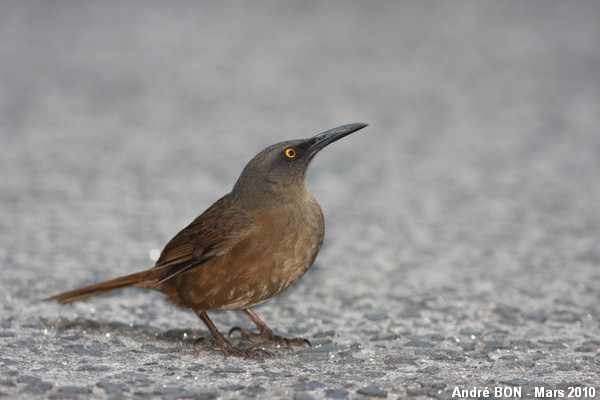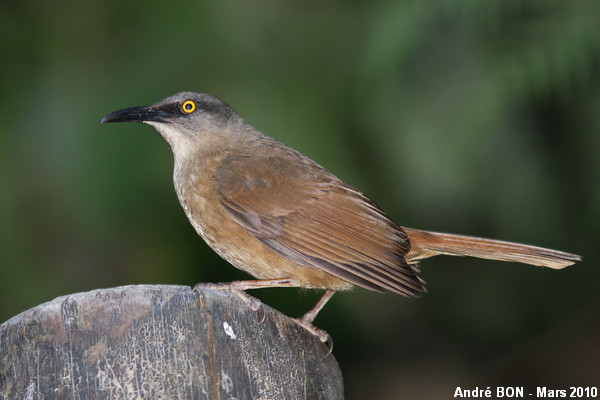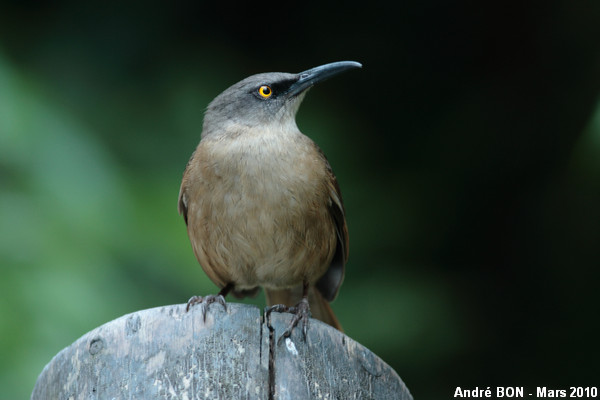


| Brown Trembler (Cinclocerthia ruficauda (Gould, 1836)) |



|
|
Scientific name: Cinclocerthia ruficauda (Gould, 1836) Common name: Brown Trembler French name: Trembleur brun, Grive trembleuse Order: Passeriformes Family: Mimidae Size: 23 to 25 cm. Habitat: Damp tropical forests with epiphytes, dry forests and less frequently in highland forests. Food: Omnivorous: Insects, spiders, snails, lizards, fruits, berries and pods. Nesting: The cup-shaped nest is made up with roots and dead leaves. It is usually located in a hole in tree. Females lay two to three eggs between March and July. Migration: Sedentary. You can sometimes observe some of them on islands where they do not nest. Geographic area: Lesser Antilles : Saba, Saint-Kitts, Nevis, Montserrat, Guadeloupe, Dominica and Saint-Vincent |
The upper side of the Brown Trembler's head and nape are blackish brown. The upper side of the back is olive brown, turning to russet at the rear. The wings are russet brown. The chest is greyish brown and becomes darker on the lateral sides. The legs are brown. The bill is black. The iris is pale yellow Females have a much longer bill than males. Its common name comes from the fact that it sometimes lets its wings hanging down and then quickly moves them upwards with a kind of trembling movement. |
| [To know more about the Brown Trembler] [Next picture] [Top] |

|
Like Lesser Antillean Bullfinches, this Brown Trembler has come to welcome the tourists at the parking near the Chutes du Carbet. |
| [To know more about the Brown Trembler] [Next picture] [Previous picture] [Top] |

|
This Brown Trembler has not been very shy and I have been able to get very close easily. Having no tripod with me and the sun going down, I have put my backpack on the ground to use it as a support for the camera. |
| [To know more about the Brown Trembler] [Previous picture] [Top] |

|
The deep yellow Brown Trembler's iris gives it a sharp eye. |